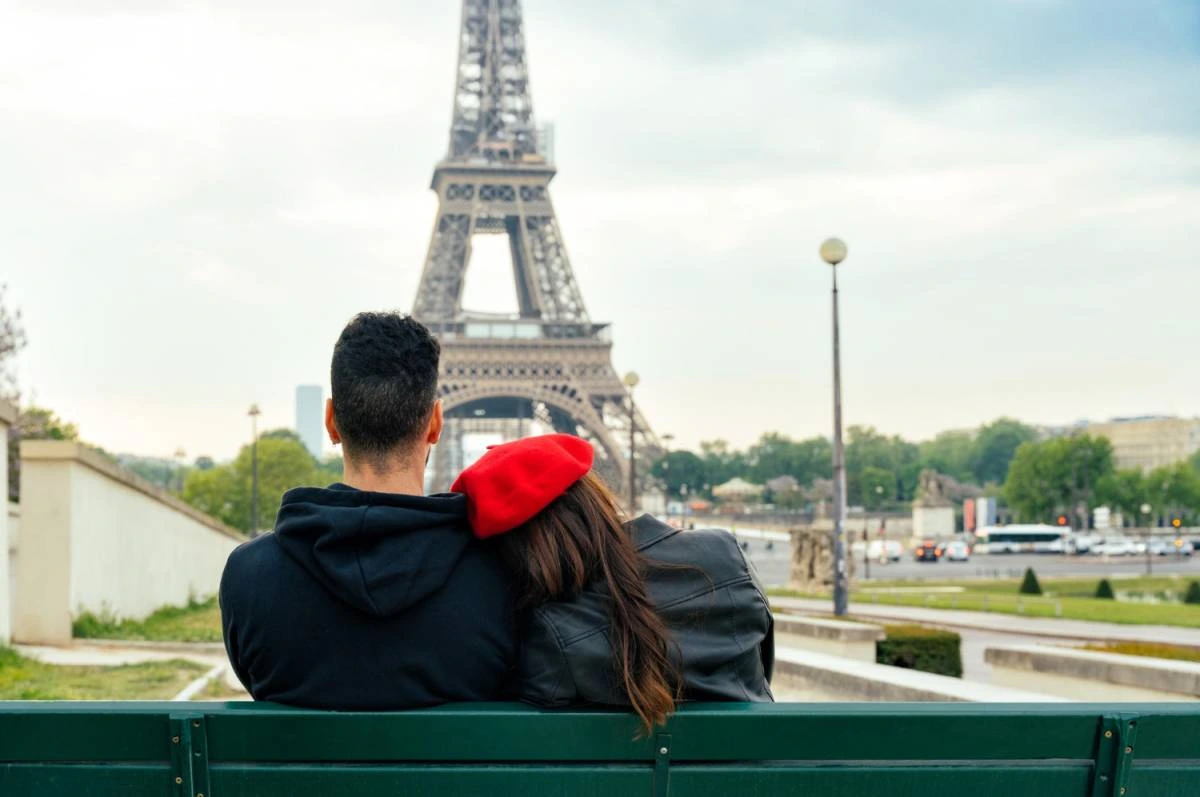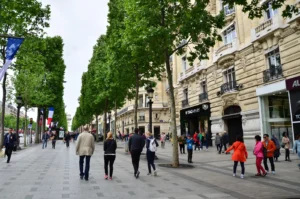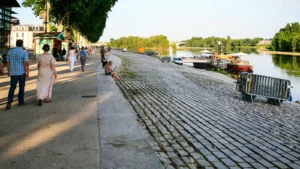Paris is a city that never loses its magic. Whether it’s your first visit or your fifth, every corner reveals something new — a café terrace glowing at sunset, a bookshop tucked beside the Seine, or a quiet street filled with the scent of fresh bread.
Beyond its famous landmarks, Paris thrives on small moments. You can admire the Eiffel Tower from the Trocadéro, stroll through the Louver’s grand halls, and still find time to explore hidden alleys in Montmartre or vintage boutiques in Le Marais. Each neighborhood carries its own rhythm and charm.
This 2025 guide brings you the best of both worlds — the must-see sights and the lesser-known gems that locals love. From art and architecture to food, gardens, and river views, it’s a complete list of experiences that show why Paris remains timeless, inspiring, and endlessly walkable.
Iconic Landmarks & Must-See Classics
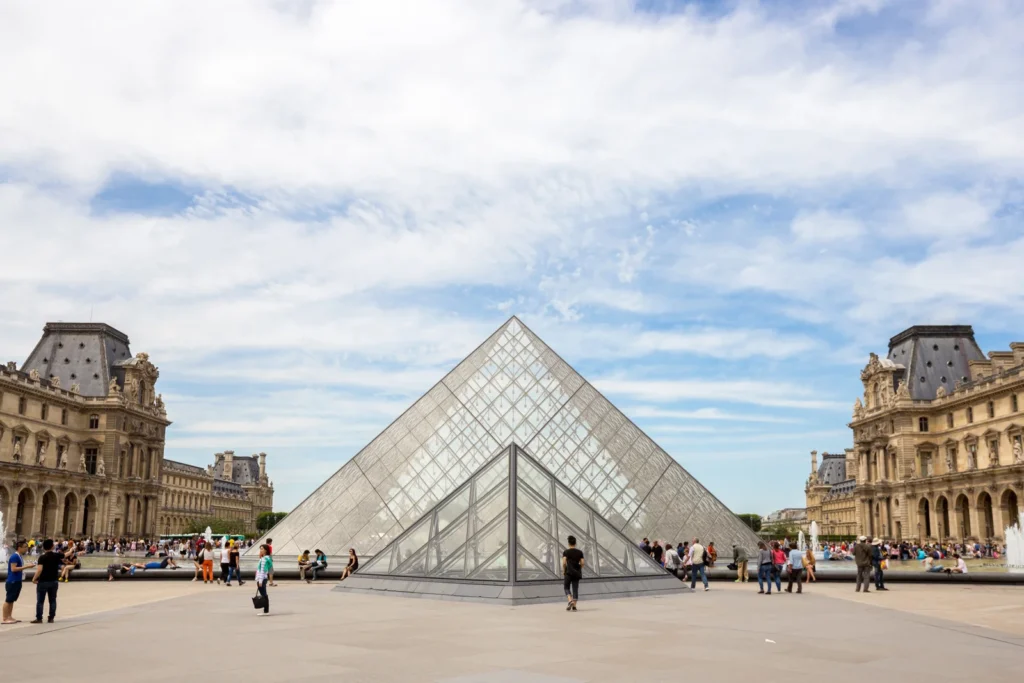
Paris’s landmarks have inspired countless artists, filmmakers, and dreamers — yet standing before them feels just as magical today. Each monument tells a story of power, art, or love, making these must-see sights essential for every visitor to experience.
Eiffel Tower (Tour Eiffel)
Nothing compares to your first glimpse of the Eiffel Tower rising above the skyline. Completed in 1889, Gustave Eiffel’s iron masterpiece remains the symbol of Paris. Visit early in the morning or around sunset, when the light softens and the crowds thin.
Climb to the second level for sweeping views of the Seine and the city’s ordered boulevards. The top observation deck, located 276 meters high, offers a panoramic view stretching from Montmartre to La Défense. At night, the tower sparkles for five minutes every hour — a simple, unforgettable moment.
For photos, the best vantage points are the Trocadéro Gardens, Pont de Bir-Hakeim, or the lawns of Champ de Mars. Many travelers bring a picnic and watch the lights come alive.
The Louver Museum
Once the royal palace of France, the Louver now houses over 35,000 artworks, from ancient civilizations to European masters. The glass pyramid by I. M. Pei forms a striking contrast to the classical architecture and serves as the main entrance to the museum.
Start with the highlights — Mona Lisa, Venus de Milo, and Winged Victory of Samothrace — but don’t rush. The museum spans over 60,000 square meters; plan two to three hours for a balanced visit. The lesser-known Dutch masters and Egyptian antiquities galleries are calmer and equally fascinating.
Evening openings (usually on Fridays) are ideal for fewer crowds and a romantic glow across the Cour Napoléon courtyard.
Notre-Dame de Paris and Île de la Cité
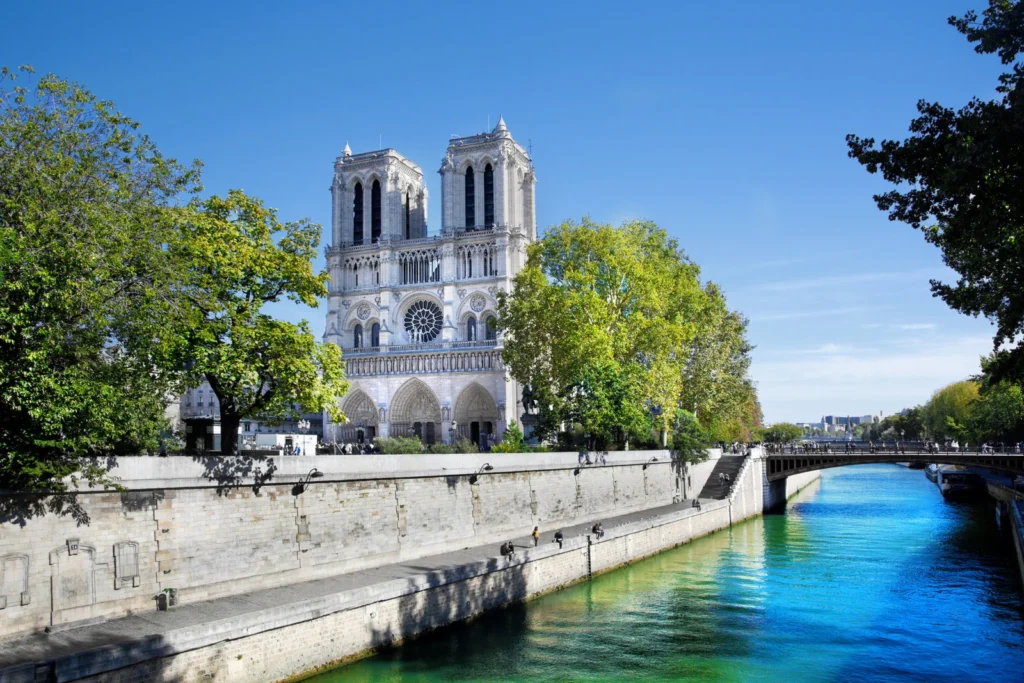
Rising over the Seine since the 12th century, Notre-Dame remains the heart of Paris, both geographically and emotionally. Though the cathedral is undergoing restoration after the 2019 fire, its façade and surrounding square are open to the public.
The nearby Sainte-Chapelle, with its kaleidoscope of stained glass, offers a breathtaking glimpse into the artistry of Gothic craftsmanship.
Take a slow walk around Île de la Cité and continue toward Île Saint-Louis for riverside cafés and boutique ice-cream shops. Watching the sunset from Pont Saint-Louis feels like stepping into a painting.
Musée d’Orsay
Across the Seine from the Louver stands the Musée d’Orsay, housed in a former Beaux-Arts railway station. It’s the world’s most incredible collection of Impressionist and Post-Impressionist art — Monet, Degas, Van Gogh, Renoir, and Caillebotte all hang here.
The museum’s design lets natural light flood its vast galleries. Don’t miss the giant clock window overlooking the Seine — one of the most Instagram-worthy spots in Paris.
A café located on the upper level offers panoramic views, making it the perfect spot for a brief break before exploring the museum’s sculptures and Art Nouveau furniture.
Arc de Triomphe and the Champs-Élysées
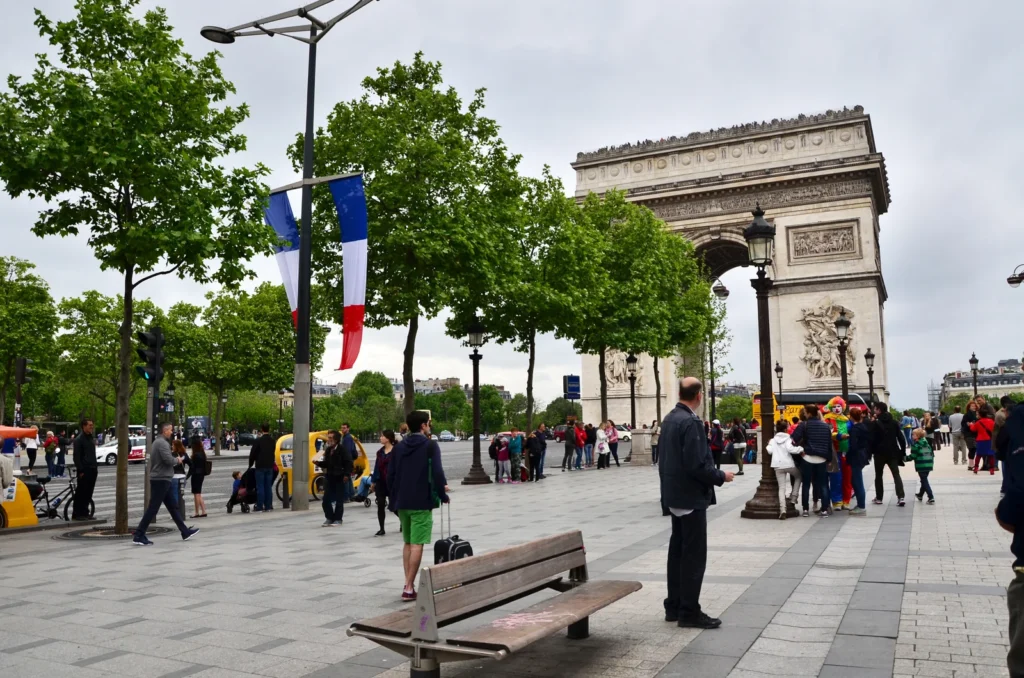
Commissioned by Napoleon to honor his armies, the Arc de Triomphe dominates the western end of the Champs-Élysées. The monument’s interior stairway (284 steps) leads to a rooftop terrace with one of the best skyline views in Paris. From here, you can see the full axis connecting the Louver, the Champs-Élysées, and La Défense.
Beneath the arch lies the Tomb of the Unknown Soldier, with its eternal flame rekindled each evening. Combine this stop with a stroll down the Avenue des Champs-Élysées, lined with cafés, cinemas, and flagship boutiques.
Sacré-Cœur Basilica and Montmartre
Sitting atop the highest hill in Paris, the Basilique du Sacré-Cœur offers a peaceful contrast to the busy city below. The white domes, built in the late 19th century, shine brightest at sunset. Climb the dome’s 300 steps for panoramic views stretching across all of Paris.
At the foot of the basilica, Montmartre retains its bohemian spirit. Wander through Place du Tertre, where artists display their work, and follow narrow lanes like Rue Lepic or Rue des Saules for charming cafés and hidden staircases.
Palace of Versailles (Day Trip)
Just 40 minutes by train from central Paris, Versailles showcases the absolute grandeur of France’s royal past. The Hall of Mirrors, Royal Apartments, and Gardens by Le Nôtre illustrate the height of 17th-century art and power.
Plan at least half a day. Arrive early to explore the palace before tour groups, then rent a bike or golf cart to roam the vast gardens. The Grand Trianon and Marie-Antoinette’s Hamlet offer quieter glimpses into royal life.
Summer visitors can enjoy evening fountain shows with classical music and fireworks — a spectacular way to end a Parisian day trip.
Panthéon
Located in the Latin Quarter, the Panthéon is both a church and a mausoleum for France’s most celebrated figures — Voltaire, Rousseau, Marie Curie, and Victor Hugo. Its neoclassical dome dominates the skyline and offers another excellent viewpoint.
Inside, the grand interior and Foucault’s Pendulum symbolize France’s devotion to science, art, and intellect. The surrounding streets are filled with student cafés and bookshops, creating a lively contrast to the monument’s solemnity.
Luxembourg Gardens (Jardin du Luxembourg)
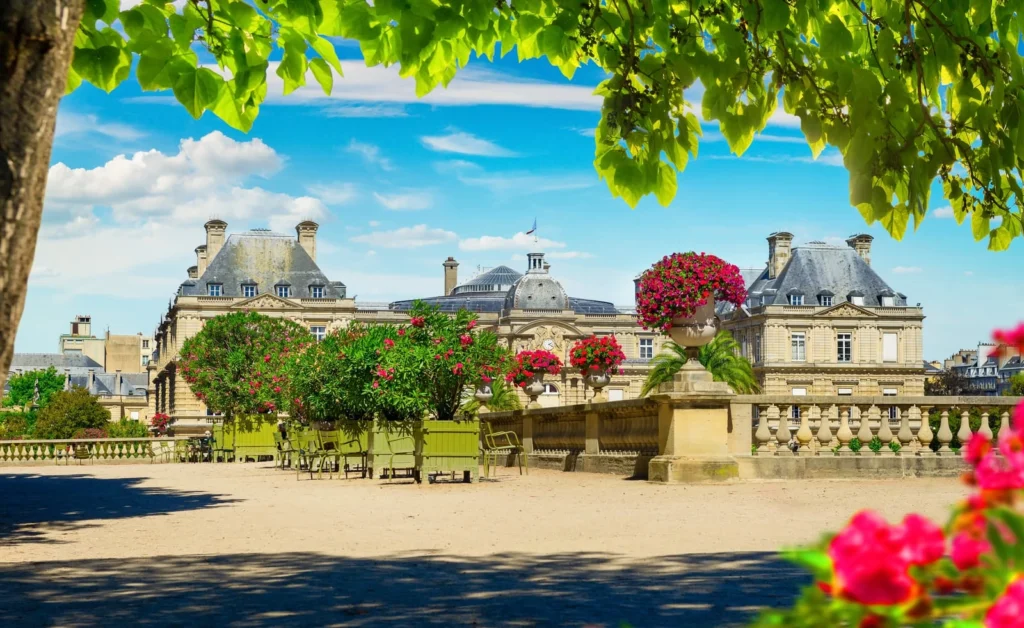
Created in the 17th century for Marie de Médicis, the Luxembourg Gardens are the city’s green heart. Locals jog, read, and play chess beneath the chestnut trees, while children sail miniature boats in the Grand Bassin pond.
Grab a pastry from Pierre Hermé or a crêpe from a nearby stand and relax by the fountains. The gardens are lovely in spring when tulips bloom, or in autumn when leaves turn golden.
Trocadéro and the Seine Bridges
End your sightseeing day with a walk along the Seine. From Pont Alexandre III to Pont Neuf, every bridge frames a postcard view. The Trocadéro Esplanade remains the most striking viewpoint for the Eiffel Tower, particularly at night when it shimmers against the Paris skyline.
Neighborhoods & Local Flavors
Paris isn’t just a city of grand monuments — it’s a collection of distinctive neighborhoods, each with its own soul. From bohemian streets and riverside cafés to designer stores and historic squares, exploring the city by district reveals its everyday beauty.
Montmartre: The Artistic Hill
Perched on a hill in the 18th arrondissement, Montmartre feels like a village frozen in time. Once home to artists like Picasso and Modigliani, its cobblestone streets still echo creativity. After visiting the Sacré-Cœur Basilica, wander through Place du Tertre, where painters sell portraits under white umbrellas.
Venture off the main path to Rue de l’Abreuvoir, one of the prettiest streets in Paris, and the nearby Maison Rose, a pink café made famous by countless photos. Stop by the Montmartre Vineyard (Clos Montmartre) — a rare patch of vines that still produces local wine. The area’s charm lies in its contrasts: timeless views, casual creperies, and a bohemian spirit that refuses to fade.
Best for: Art lovers, photographers, sunset seekers
Don’t miss: Musée de Montmartre, Café des Deux Moulins, and the panoramic view from Rue du Chevalier-de-la-Barre.
Le Marais: History Meets Modern Cool
Once the aristocratic quarter of Paris, Le Marais blends historic mansions with trendy cafés and art galleries. It’s one of the few districts that retains its medieval street layout, making it ideal for aimless exploration.
Start at Place des Vosges, the oldest planned square in Paris, framed by red-brick arcades and elegant townhouses. Visit the Picasso Museum or the Musée Carnavalet, which chronicles the city’s history. Then explore Rue des Rosiers, the heart of the Jewish Quarter, for falafel stands, bakeries, and vintage boutiques.
Le Marais also brims with independent fashion stores, perfume ateliers, and design studios. It’s where the past meets the avant-garde — and where locals come to eat, stroll, and socialize on weekends.
Best for: History lovers, foodies, shoppers
Don’t miss: L’As du Fallafel, Merci Concept Store, Hôtel de Sully, and evening drinks near Rue Vieille-du-Temple.
Saint-Germain-des-Prés & the Latin Quarter: Literary Soul of Paris
Cross the Seine to the Left Bank, where Saint-Germain-des-Prés and the Latin Quarter carry the city’s intellectual legacy. Writers like Hemingway, Sartre, and Beauvoir once debated philosophy over espresso in cafés like Les Deux Magots and Café de Flore.
Today, the area retains its cultured energy. Bookshops line Boulevard Saint-Germain, while Shakespeare and Company near Notre-Dame remains a pilgrimage spot for readers. Wander through the Luxembourg Gardens, browse art galleries, or enjoy live jazz in candlelit bars.
In the nearby Latin Quarter, the mood is livelier — a maze of bistros, student cafés, and medieval streets. Rue Mouffetard is perfect for crepes and market browsing, while Panthéon and Sorbonne University anchor the area’s scholarly spirit.
Best for: Literature, café culture, live music
Don’t miss: Eglise Saint-Sulpice, Odéon Theatre, Rue de Buci Market
Canal Saint-Martin & Belleville: Creative and Contemporary Paris
In the 10th and 11th arrondissements, the Canal Saint-Martin attracts artists, students, and young Parisians who prefer a slower pace. Iron footbridges cross tree-lined waterways where locals picnic or play guitar in the evenings.
Cafés like Le Comptoir Général and Café Craft sit beside design shops and thrift stores. You can follow the canal north toward Parc des Buttes-Chaumont, one of Paris’s most beautiful public parks, built around cliffs and waterfalls.
Nearby, Belleville adds a multicultural edge, featuring street art and a diverse array of global cuisines — from Chinese dumplings to North African pastries. It’s one of the best areas for mural walks and authentic food at reasonable prices.
Best for: Trendsetters, food explorers, photographers
Don’t miss: Rue Sainte-Marthe, Le Pavillon des Canaux, and the view from Parc de Belleville.
Le Quartier Latin: Youthful Energy and Ancient Roots
The Latin Quarter pulses with student life. It takes its name from the Latin once spoken by Sorbonne scholars in the Middle Ages. This mix of academic history and youthful energy makes it one of the city’s most vibrant areas.
Here, narrow lanes twist between centuries-old churches, bookshops, and lively bistros. Visit Eglise Saint-Étienne-du-Mont, where scenes from “Midnight in Paris” were filmed, or wander to Arènes de Lutèce, a Roman amphitheater hidden in plain sight.
Evenings are best enjoyed with an affordable prix-fixe dinner at a local brasserie, followed by a riverside walk toward Pont Saint-Michel. It’s an easy area to fall in love with — casual, cultured, and full of life.
Best for: Students, history buffs, casual explorers
Don’t miss: Rue Mouffetard Market, Panthéon, Jardin des Plantes.
Les Passages Couverts: Hidden Paris
For a glimpse of 19th-century Parisian life, step into the covered passages — elegant glass-roofed arcades that predate modern malls. They’re perfect for rainy days or vintage shopping.
Galerie Vivienne, located near the Palais-Royal, is the most beautiful, lined with mosaic floors and featuring antique bookstores. Passage des Panoramas and Passage Jouffroy host old-world cafés and toy shops. These arcades feel like time capsules, untouched by the outside world’s rush.
Best for: Architecture lovers, quiet explorers, rainy-day walks
Don’t miss: Passage Verdeau and its photography galleries
Bastille & Oberkampf: Nightlife and Local Vibe
The Bastille area, once a symbol of revolution, is now known for its buzzing nightlife. Start your evening at Rue de la Roquette or Rue de Lappe, packed with bars, live music venues, and late-night bistros. For a more relaxed option, the Marché d’Aligre, nearby, offers fresh produce, cheese, and wine — perfect for a morning visit before the crowds arrive.
In Oberkampf, the energy continues with creative cocktail bars and indie music venues, such as Café Charbon and La Bellevilloise. It’s modern Paris — casual, expressive, and full of character.
Best for: Nightlife, music, local life
Don’t miss: Rue de Lappe bars, Marché d’Aligre, Rue Oberkampf.
Every Paris neighborhood offers a new side of the city — one shaped by history, art, and the daily lives of its residents. Whether you’re sketching in Montmartre, shopping in Le Marais, or sharing a bottle of wine by the canal, these local experiences bring you closer to the real Paris.
Experiences & Immersive Activities
To honestly know Paris, you have to experience it — not just observe it. Beyond its famous sights and historic streets, the city invites you to taste, listen, learn, and create. These immersive activities let you live in Paris the way locals do, one moment at a time.
Seine River Cruise
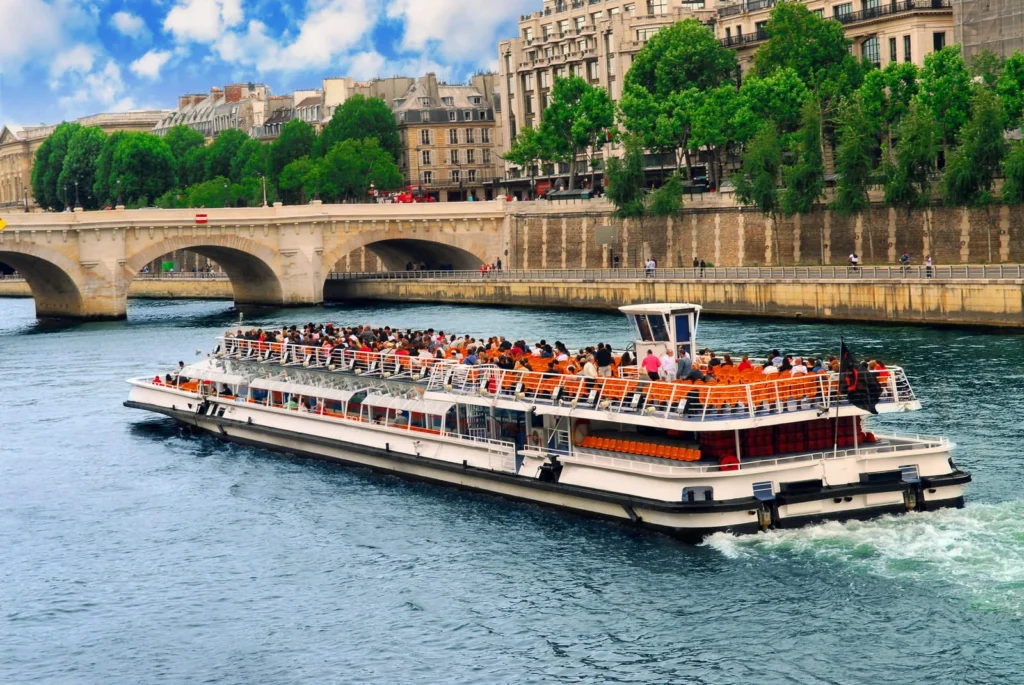
Few experiences capture the romance of Paris like a cruise on the River Seine. The city’s landmarks — Notre-Dame, the Louver, and the Eiffel Tower — unfold gracefully along its banks.
Choose between a day cruise for clear views or an evening dinner cruise when the city lights shimmer on the water. Companies like Bateaux Parisiens and Vedettes du Pont Neuf offer a variety of experiences, ranging from relaxed sightseeing to gourmet dining accompanied by live music.
Board at sunset, and you’ll see why Paris is called the “City of Light.” As the Eiffel Tower sparkles and bridges glow, the river becomes a moving postcard.
Insider tip: Sit on the open deck and bring a light jacket — the breeze can get cool, even in summer.
Food and Culinary Adventures
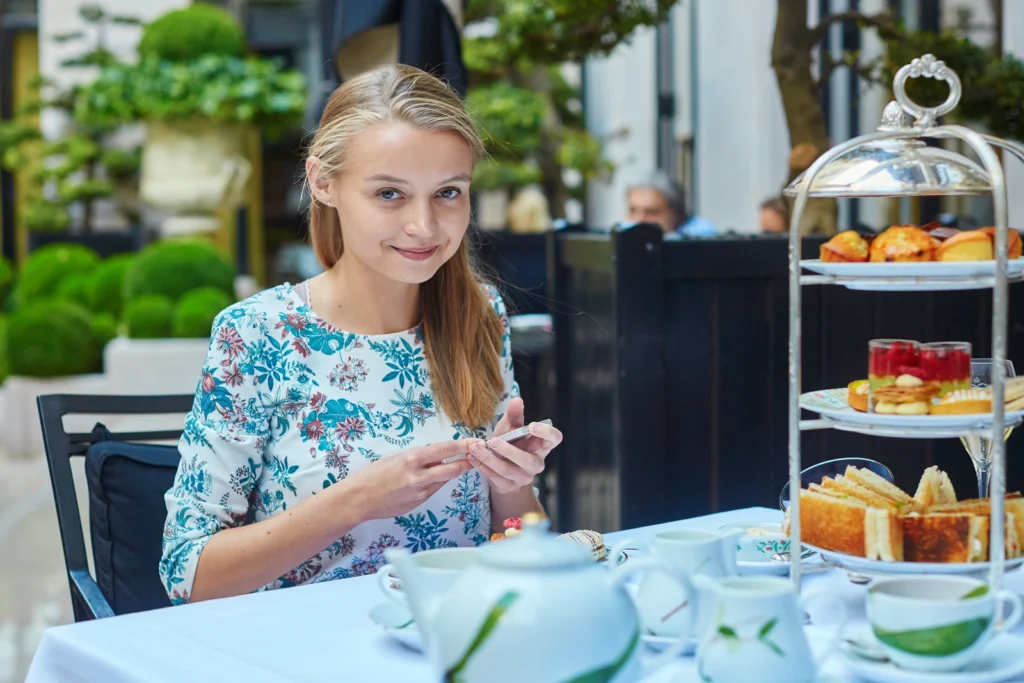
Food is at the heart of Parisian culture. From bustling markets to Michelin-starred restaurants, every meal tells a story of craftsmanship and pride. Begin with a guided food tour through neighborhoods such as Le Marais, Saint-Germain-des-Prés, or Montorgueil.
You’ll taste fresh baguettes, aged cheeses, handmade chocolates, and regional specialties — all while learning the stories behind them.
Want to go deeper? Join a macaron-making class or a French cooking workshop led by local chefs. Many studios offer small-group sessions where you can bake pastries or prepare classic dishes, such as coq au vin and tarte tatin.
Notable experiences:
- Le Foodist (Left Bank) – small, hands-on cooking classes
- La Cuisine Paris – pastry and bread workshops with English-speaking chefs
- Marché d’Aligre – morning market perfect for local produce and tastings
Parisian Picnics and Markets
A picnic in Paris is an art form. Locals gather by the Seine, on the steps of Sacré-Cœur, or in Luxembourg Gardens with bread, cheese, wine, and fresh fruit. It’s simple, social, and endlessly charming.
To prepare your own, visit one of the city’s lively food markets:
- Marché Bastille – one of the largest, open on Thursdays and Sundays
- Marché Rue Cler – perfect for baguettes, charcuterie, and desserts
- Marché des Enfants Rouges – Paris’s oldest covered market, filled with global food stalls
Buy a bottle of wine, grab a blanket, and join the locals. Sunset picnics near the Pont des Arts or Square du Vert-Galant create unforgettable memories.
Live Music, Jazz, and Cabaret Nights
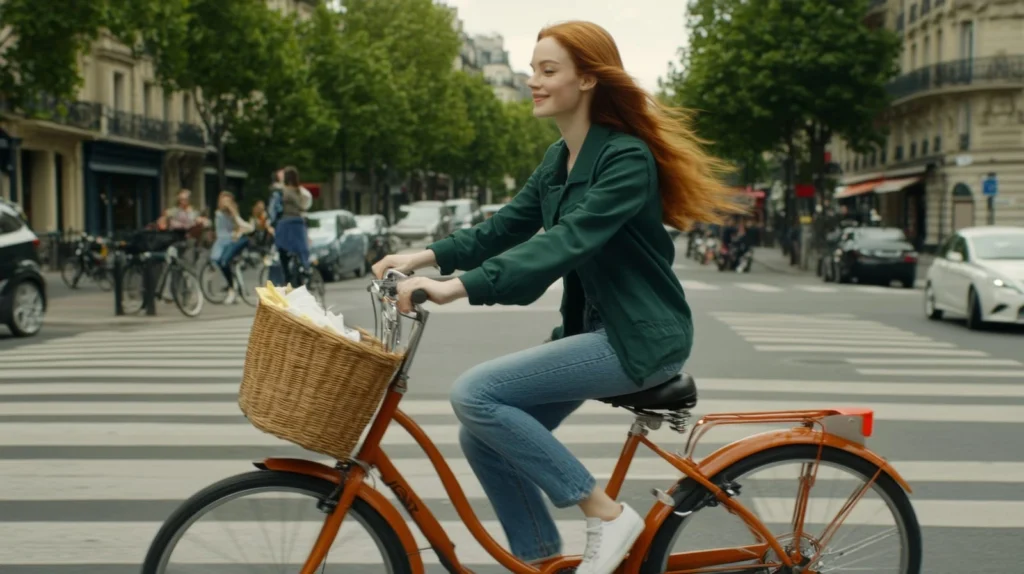
When the sun sets, Paris hums with music. From historic cabarets to underground jazz bars, there’s always a rhythm waiting to be discovered.
Cabarets:
The legendary Moulin Rouge in Montmartre offers dazzling performances that mix dance, acrobatics, and costume artistry. For something more intimate, try Crazy Horse or Lido 2 Paris, both known for modern, theatrical flair.
Jazz & Live Music:
Paris’s jazz scene is vibrant, reflecting its multicultural soul. Catch live performances at Le Duc des Lombards near Châtelet or New Morning in the 10th arrondissement. In Saint-Germain, Caveau de la Huchette — a 16th-century cellar club — keeps the swing alive every night.
Classical & Opera:
For a grand evening, attend a concert at Opéra Garnier or Philharmonie de Paris, both architectural masterpieces as impressive as the performances inside.
Workshops and Creative Tours
Paris is a city of makers and dreamers. Whether you’re crafting perfume, sketching the skyline, or photographing street life, there’s an experience for every creative traveler.
Perfume Workshops: Create Your Own Signature Scent in a Perfume Atelier. Maison Fragonard and Le Studio des Parfums offer guided sessions where you mix essential oils to design a personal fragrance — a truly Parisian souvenir.
Photography Tours: Join a local photographer to explore hidden corners through your lens. You’ll learn composition techniques while capturing the city’s architecture, reflections, and golden light.
Art Classes & Sketch Walks: In Montmartre, artists lead outdoor painting sessions inspired by the Impressionists. Even beginners find joy in sketching along café terraces or beside the Seine.
Street Art Tours: For a contemporary twist, discover Paris’s vibrant murals in the 13th arrondissement or Belleville. Guided tours explain the artists’ stories and social messages behind the graffiti.
Bicycle and Walking Tours
Paris is best seen slowly — on two feet or two wheels. Guided walking tours reveal details that might otherwise go unnoticed: hidden courtyards, artisan workshops, or secret gardens tucked behind gates.
Bicycle tours, especially at night, offer a refreshing perspective. Riding past illuminated monuments while locals chat on terraces captures the city’s rhythm perfectly. Electric bikes make it easy to cover long distances, including riverside paths and hilltop neighborhoods like Montmartre.
Recommended:
- Fat Tire Tours – reliable, English-speaking guides for day or night bike rides
- Paris Greeters – locals who offer free walks and personal insights
Cultural Events and Seasonal Highlights
Depending on when you visit, Paris transforms with festivals, fashion, and celebrations.
- Spring: Cherry blossoms at Parc de Sceaux, open-air concerts, and museum nights
- Summer: Paris Plages (artificial beaches by the Seine), rooftop parties, and Bastille Day fireworks
- Autumn: Wine harvest festival in Montmartre, art fairs, and film screenings
- Winter: Christmas markets, skating rinks, and twinkling holiday lights across the city
Participating in local events is one of the best ways to experience Paris beyond the guidebook — spontaneous, social, and deeply authentic.
Paris After Dark
For many visitors, Paris shines brightest after dusk. The bridges, monuments, and streets take on a golden glow. Stroll along the Seine quays, stop for dessert at Carette, or sip wine in a candlelit bar in Le Marais. You don’t need an itinerary — just time and a sense of curiosity. The city rewards those who wander.
From cooking classes to jazz clubs, every Paris experience adds texture to your trip. You’ll leave with memories that go beyond photos — flavors, sounds, and conversations that stay long after you’ve returned home.
Museums & Cultural Stops Beyond the Obvious
Paris holds more than 150 museums, covering every corner of art, science, and history. While the Louver and Musée d’Orsay dominate most itineraries, the city’s smaller, lesser-known museums often offer a more intimate and rewarding experience. These cultural gems reveal the deeper layers of Parisian life — elegant, eccentric, and endlessly fascinating.
Musée Rodin
Tucked behind tall iron gates near Les Invalides, the Musée Rodin feels like a secret garden in the city. Dedicated to Auguste Rodin, it showcases his most powerful sculptures — The Thinker, The Kiss, and The Gates of Hell — all displayed with natural light pouring through the mansion’s windows.
The outdoor sculpture garden is just as beautiful, with manicured lawns, fountains, and views of the golden dome of Les Invalides. Many visitors linger on benches surrounded by art, flowers, and quiet. It’s one of Paris’s most romantic and reflective spots.
Why visit: Enjoy a tranquil atmosphere, open-air art displays, and an ideal spot for a slow morning.
Musée de l’Orangerie
While the Louver overwhelms and the Musée d’Orsay dazzles, the Musée de l’Orangerie soothes. Located at the edge of the Tuileries Gardens, it’s home to Monet’s monumental Water Lilies — eight vast panels arranged in oval rooms designed by the artist himself.
The museum also features works by Renoir, Cézanne, Picasso, and Matisse, but the highlight remains the silence and stillness of those luminous water scenes. The experience feels almost meditative.
Why visit: A compact, beautifully curated museum perfect for Impressionist lovers seeking calm.
Musée Jacquemart-André
Once a private mansion of art collectors Édouard André and Nélie Jacquemart, this museum on Boulevard Haussmann combines fine art with the grandeur of 19th-century Parisian life. Visitors can wander through marble staircases, gilded salons, and an ornate winter garden.
The collection includes Italian Renaissance masterpieces, Dutch paintings, and exquisite decorative arts. The museum café is also one of the most elegant in Paris — ideal for tea and pastries after your visit.
Why visit: Combines luxury, intimacy, and art — an overlooked gem for architecture and history lovers.
Musée de l’Armée & Les Invalides
For those interested in France’s military and political history, Musée de l’Armée at Les Invalides offers an impressive journey from medieval armor to World War II exhibits. The highlight is Napoleon Bonaparte’s tomb, placed under the grand dome in a striking red quartzite sarcophagus.
Beyond its historical significance, the museum’s organization and architecture make it an engaging experience for all ages. Temporary exhibitions often cover key moments in European history.
Why visit: A deep dive into French history in one of the city’s most striking buildings.
Père Lachaise Cemetery
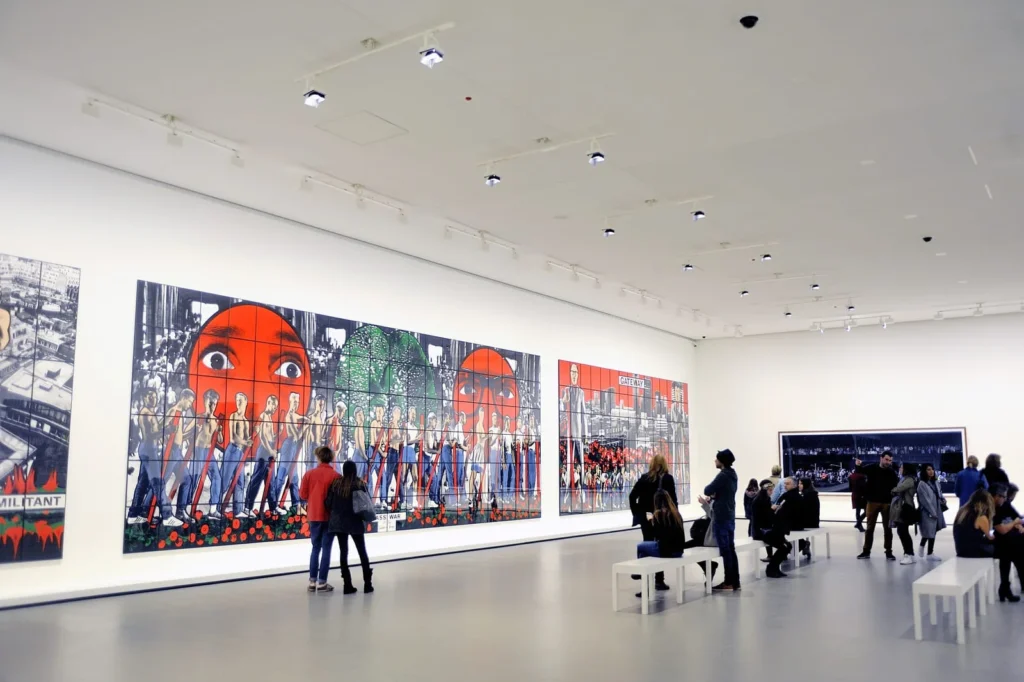
It might seem unusual to visit a cemetery, but Père Lachaise is one of the world’s most visited. Opened in 1804, it’s an open-air museum of sculpture and memory.
Among its famous residents are Oscar Wilde, Jim Morrison, Édith Piaf, Frédéric Chopin, and Gertrude Stein. Walking through its shaded paths feels both peaceful and inspiring, especially in the golden light of afternoon.
Bring a map — the cemetery covers 44 hectares — and take time to appreciate the artistry of the tombs and the quiet reflection they invite.
Why visit: Atmospheric, contemplative, and full of stories from centuries of Parisian life.
Petit Palais
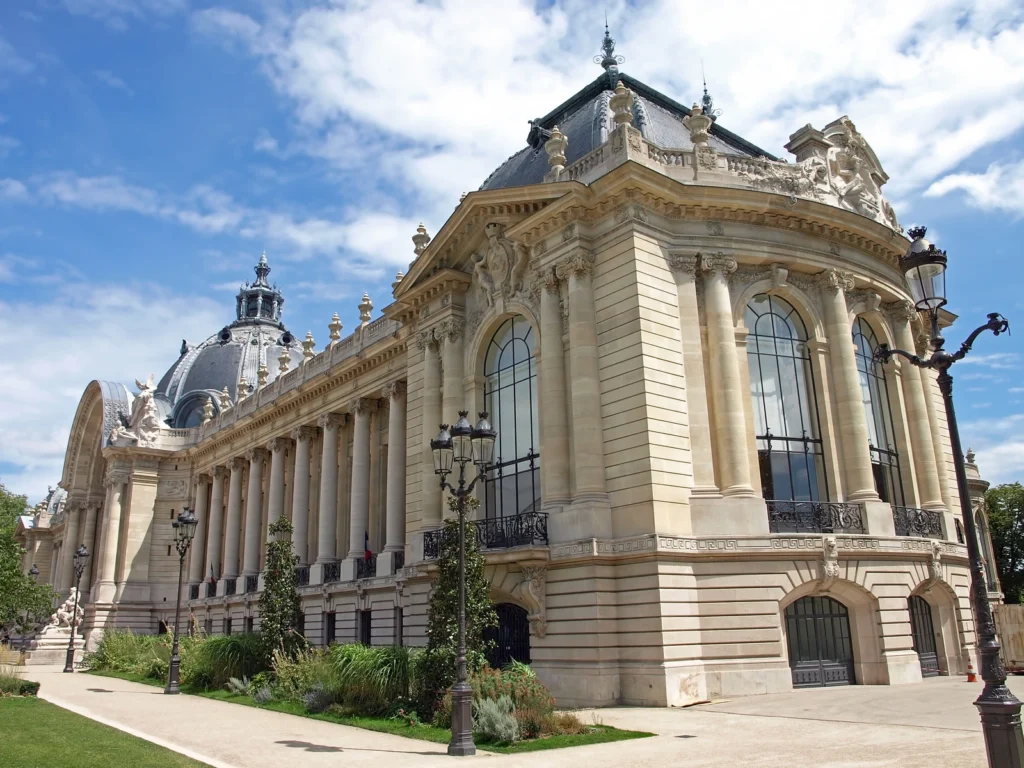
Built for the 1900 Exposition Universelle, the Petit Palais is an architectural treasure. It houses the Musée des Beaux-Arts of Paris, featuring works by Courbet, Delacroix, and Rembrandt, alongside sculptures, decorative arts, and photography.
The best surprise? Entry to the permanent collection is free. The inner courtyard café, surrounded by mosaic columns and palm trees, is one of Paris’s most peaceful breaks.
Why visit: Free, elegant, and less crowded — a perfect alternative to larger museums.
Palais de Tokyo
Paris isn’t just about classical art — it’s also a hub of experimental creativity. The Palais de Tokyo, near Trocadéro, celebrates contemporary and avant-garde art. Exhibitions often challenge perception through immersive installations and bold themes.
The atmosphere is raw and modern, appealing to travelers curious about Paris’s evolving cultural scene. Many events include live performances and night openings.
Why visit: For those who love modern art, fashion, and design in unconventional spaces.
Musée d’Art Moderne de Paris
Located next to Palais de Tokyo, this museum showcases 20th-century art from Picasso to Delaunay. Its centerpiece — Raoul Dufy’s La Fée Électricité — covers an entire wall, illustrating the story of modern power and progress. The museum also explores cubism, surrealism, and abstract movements in depth.
Why visit: A must for modern art enthusiasts; quieter and more spacious than the prominent museums.
Fondation Louis Vuitton
On the edge of Bois de Boulogne, architect Frank Gehry’s glass masterpiece — the Fondation Louis Vuitton — hosts major contemporary exhibitions. Its sail-like structure gleams in the sunlight and houses installations by artists such as Basquiat, Koons, and Kusama.
The building itself is a masterpiece. From its rooftop terraces, you can see the park below and the western skyline of Paris.
Why visit: Cutting-edge art in a stunning architectural landmark.
Musée Carnavalet
If you’re fascinated by the story of Paris itself, the Musée Carnavalet in Le Marais offers an immersive journey through its history, from prehistoric times to the present day. Housed in two adjoining mansions, the museum’s exhibits include royal portraits, Revolution relics, Art Nouveau rooms, and vintage metro signs.
Why visit: It tells the story of Paris through everyday objects and art, all for free.
Musée Gustave Moreau
This small museum in the 9th arrondissement was once the home and studio of Symbolist painter Gustave Moreau. Every inch of its walls is covered with mythological paintings, sketches, and intricate details.
The spiral staircase connecting the floors is as artistic as the paintings themselves, and the atmosphere feels untouched since the 19th century.
Why visit: A hidden treasure for art lovers seeking intimacy and authenticity.
Dreaming of a Castle Stay? Discover Château de Lasfonds
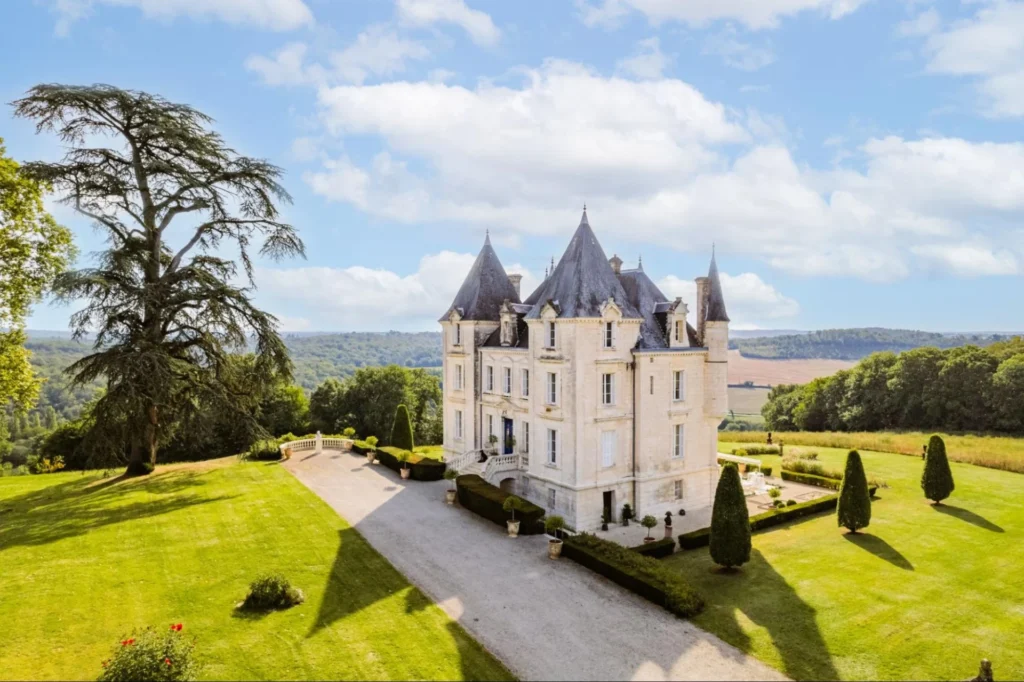
If your Paris trip has you longing for a quieter escape steeped in history and luxury, let me introduce you to Château de Lasfonds. Nestled in the Dordogne / Charente countryside, this beautifully restored 19th-century château is available for exclusive rent for groups of up to 20 guests.
Imagine having your own private realm: 6.5 hectares of gardens and rolling countryside, elegant interiors blending heritage charm with modern comforts, a heated pool, and multiple guest houses. Strategic access makes it surprisingly reachable — just a 2.5-hour TGV ride from Paris to Angoulême, followed by a short drive.
Whether you’re planning a family reunion, a romantic retreat, or a small group getaway, Château de Lasfonds offers both intimacy and grandeur. The concierge can help you arrange local experiences: wine tastings, village tours, gourmet dinners, and even outdoor adventures nearby.
Ready to make your castle fantasy real? Don’t wait — stays often fill up months in advance, especially during prime season. Secure your private fairytale now and let the magic of Lasfonds become part of your French story.
FAQs: Top Things to Do in Paris
Allowing three to five days, you can comfortably explore Paris. In that time, you can visit major landmarks like the Eiffel Tower and Louver, enjoy a Seine cruise, and explore charming districts like Le Marais or Montmartre. A whole week allows you to include day trips to Versailles, Giverny, or Champagne for a richer, more leisurely experience.
The best months are April to May and September to October, when the weather is mild, crowds are smaller, and daylight lasts longer. Spring brings cherry blossoms and outdoor cafés, while autumn offers golden parks and cozy evenings. Summer is lively but crowded, and winter charms visitors with Christmas markets and lower hotel rates.
The most stunning views are from the Eiffel Tower, Arc de Triomphe, and Montparnasse Tower. For free alternatives, consider visiting the Galeries Lafayette rooftop or the Sacré-Cœur dome in Montmartre. Sunsets from Pont Alexandre III or the Trocadéro Esplanade create postcard-perfect photos without requiring a single step.
The metro is fast, affordable, and easy to use. Walking is ideal for short distances, and Vélib’ bikes offer a scenic way to explore. Taxis and rideshares, such as Uber, are convenient but slower in traffic. Buy a Navigo Easy card for unlimited rides across the metro, tram, and bus networks during your stay.
Book tickets online in advance, visit early in the morning or late at night, and opt for weekdays over weekends. For the Louver, use the Carrousel du Louver entrance instead of the main pyramid. Arriving before 10 a.m. or after 4 p.m. at major museums helps you enjoy quieter hours without long queues.
A moderate traveler spends around €100–€150 per day, including meals, transport, and attractions. Budget travelers can manage with €70 by dining in bakeries or markets, while high-end travelers should plan for €200–€300 daily. Museum passes, set lunch menus, and walking tours help maximize value without sacrificing experience.
Yes — especially if you’re polite. Always greet with “Bonjour” or “Bonsoir” before asking a question, and thank them with “Merci.” Most Parisians appreciate basic effort in French. Being courteous, quiet in cafés, and respectful of local customs makes interactions warmer and smoother, especially in smaller shops or restaurants.
Stay in central arrondissements (1st–7th) for easy access to major attractions. The Marais offers a rich history and style, Saint-Germain-des-Prés is ideal for its cafés and culture, and the Latin Quarter suits younger travelers. For quieter stays, Montparnasse and the Canal Saint-Martin strike a balance between comfort and local charm.
Yes. Paris is generally safe for solo travelers, including women, as long as you remain vigilant. Use well-lit routes at night, avoid displaying valuables, and be cautious of street scams around landmarks. The metro and taxis are reliable, and most neighborhoods are safe for evening strolls, especially near cafés and main boulevards.
You can enjoy Paris on any budget. Visit Luxembourg Gardens, Tuileries, and Parc des Buttes-Chaumont; explore Galeries Lafayette’s rooftop for panoramic views; and walk along the Seine at sunset. Many museums, such as the Petit Palais and Musée Carnavalet, offer free admission to their permanent collections year-round.
Spend Day 1 exploring the Eiffel Tower, the Champs-Élysées, and the Louver, finishing with a Seine cruise. Day 2 covers Musée d’Orsay, Luxembourg Gardens, and Montmartre. Day 3 focuses on Notre-Dame, Sainte-Chapelle, and Le Marais. Mix sightseeing with café stops — Paris rewards those who take the time to slow down between highlights.
Pack comfortable walking shoes, a light rain jacket, and layered clothing to accommodate changing weather conditions. Include a universal plug adapter and a small cross-body bag for safety. A reusable water bottle and compact umbrella are essentials. Parisian style is chic but effortless — neutral colors and simple outfits blend in perfectly.
